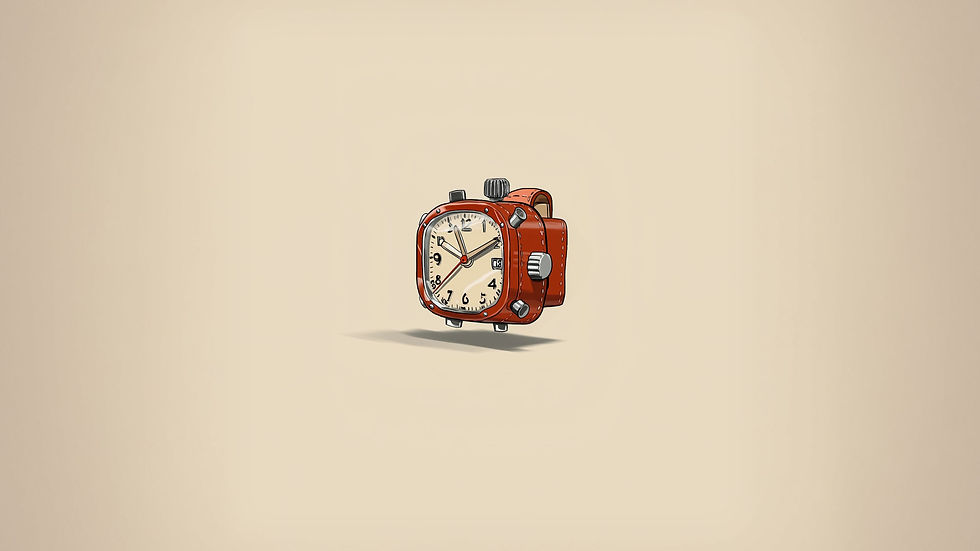Designing for Emotion: How to Create Delightful User Experiences
- Prabhash Kumar
- Oct 9, 2024
- 3 min read
Updated: Nov 24, 2024

Ever wondered why certain apps or websites stick in your mind while others fade into obscurity? It’s not just about functionality or aesthetics—it’s about how they make you feel. Designing for emotion is a powerful way to create memorable user experiences. By tapping into users' feelings, you can foster stronger connections between them and your product. In this blog, we’ll explore how to design for emotion, why it matters, and practical steps to incorporate emotional design into your work.
Why Emotion Matters in UX Design
Humans are emotional beings. Our feelings influence decisions, shape perceptions, and drive actions. A well-designed interface may be efficient, but if it fails to evoke positive emotions, it risks being forgettable.
Real-Life Analogy
Think about entering a cozy coffee shop. The smell of freshly brewed coffee, warm lighting, and friendly staff make you feel welcome and comfortable. Compare this to a cold, poorly lit café with indifferent service. You’re more likely to return to the first one, not just for the coffee but for how it made you feel.
The same principle applies to digital products. A delightful experience keeps users coming back, while a bland or frustrating one drives them away.
Three Pillars of Emotional Design
1. Visceral Design: First Impressions Matter
Visceral design focuses on creating an immediate emotional response. Colors, typography, animations, and images all play a role in making users feel excited, calm, or intrigued the moment they interact with your product.
Example: Bright colors and playful animations in apps like Duolingo make learning feel less like a chore and more like a game.
2. Behavioral Design: Usability Meets Joy
Behavioral design ensures that interactions are intuitive and seamless. When users can achieve their goals easily, they feel satisfied and confident. Add subtle elements of joy, like animations or microinteractions, to elevate usability.
Example: The heart animation when you like a post on Instagram adds a delightful touch to a functional interaction.
3. Reflective Design: Creating Meaning
Reflective design taps into users’ values and aspirations. It’s about creating a product that aligns with their identity and leaves a lasting impression.
Example: Nike’s apps don’t just track fitness—they inspire users to see themselves as athletes, fostering a sense of accomplishment.
Steps to Design for Emotion
Understand Your Users’ Emotions
Conduct user research to identify emotional pain points and moments of delight.
Use empathy maps to visualize what users feel, think, say, and do.
Craft a Visual Identity That Resonates
Choose colors, fonts, and imagery that evoke desired emotions.
For example, blue conveys trust and calm, while red signals energy and urgency.
Use Microinteractions Thoughtfully
Small animations, sounds, or haptic feedback can turn ordinary interactions into delightful moments.
Example: A success animation after completing a task boosts user satisfaction.
Design for Positive Feedback Loops
Recognize and reward user actions to reinforce good behavior.
Example: Badges or progress bars in apps like Duolingo or Fitbit motivate users to keep going.
Balance Emotion and Functionality
Don’t sacrifice usability for aesthetics. Ensure emotional design complements the product’s core functionality.
Examples of Emotional Design in Action
Airbnb: Warm visuals, personal storytelling, and encouraging messages like "You belong here" create a sense of community and trust.
Canva: Simple onboarding and fun illustrations reduce the intimidation of design, making users feel empowered.
Slack: Playful copy and cheerful loading screens transform workplace communication into a friendlier experience.
Challenges in Emotional Design
While designing for emotion is powerful, it comes with its own challenges:
Cultural Differences: Emotions vary across cultures. What delights one user may confuse another.
Overuse of Delight: Too many animations or elements can overwhelm users and make the product feel less serious.
Balancing Simplicity: Emotion should enhance usability, not complicate it.
Conclusion
Designing for emotion isn’t just about making users happy—it’s about creating meaningful connections. When you design for emotion, you transform ordinary interactions into memorable experiences. By focusing on visceral, behavioral, and reflective design, you can craft products that not only meet users’ needs but also resonate with their hearts.



Comments